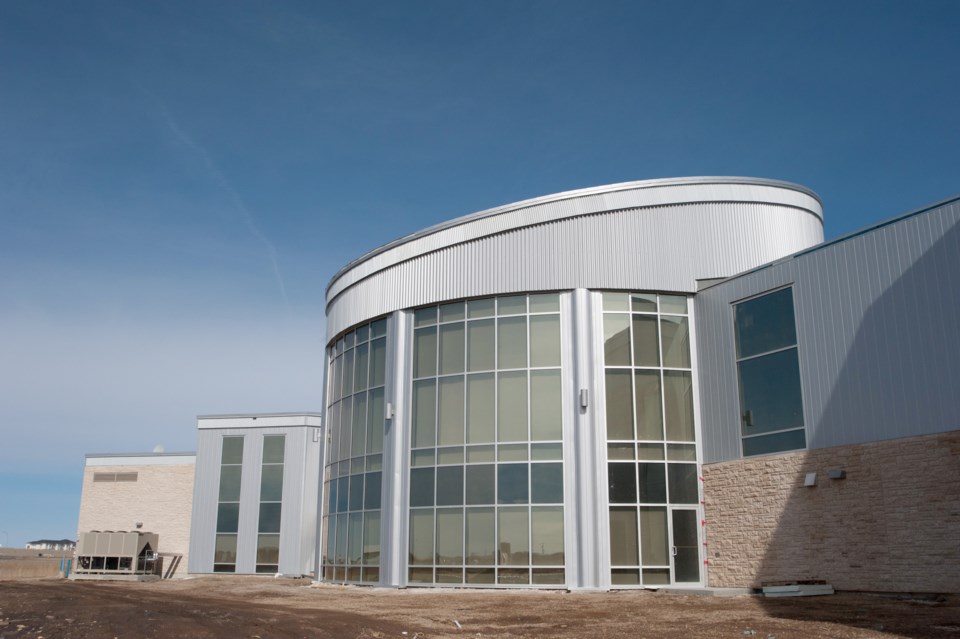In the midst of its 40th year, the Southeast Regional College is looking to update its image while moving its programming and services forward.
This evolution is meant to meet the growing and changing needs of advanced education in the province, and it will see the college continuing to focus on skill-specific courses while returning to its past as a stepping stone to a university education.
The college in the past had been used as a vehicle for some students to kick start their education prior to pursuing a university degree. Though the college got away from that, College President Dion McGrath said they are working on re-establishing a connection with the Universities of Regina and Saskatchewan, in order to offer coursework with credits that students can use toward other centres of education.
“We, as a college, have a wonderful opportunity to help learners who want to go on to university education,” said McGrath.
The Southeast Regional College used to be one of the colleges that delivered the most university programming. About a decade ago, that focus fell by the wayside, through a combination of retiring professors and a southeast labour market demanding specific technical trades. McGrath said the lack of succession planning was the primary reason for the decline.
“The expertise, all of a sudden, disappeared. Going forward, as part of our academic programming, we need to do a better job of making sure we have succession plans in place internally, so that we don’t lose capacity in any part of our programming.”
The college has identified the Estevan campus as a good option for offering university programs, and McGrath said they are working on having the campus accredited as a university satellite campus.
“What that will mean is we will be able to work with the universities to market first-year university,” said McGrath, who noted that may include the first-year coursework of a number of different programs, from nursing to arts and sciences. “We want to become a relevant choice for learners who want to learn where they live, at least for that first year of university. We’re working with the two universities to identify and sort out how we can re-engage in helping take first-year university out into our region in a more proactive, purposeful way.”
The plan is to have the Estevan campus certified by the fall, so students looking to apply to university programs next winter will have the option of beginning their post-secondary careers in Estevan by fall 2016.
But the rapid growth of the energy sector in the last 10 years has also encouraged many young people to prepare for and enter careers in that sector. While many positions benefit from or require university educations, there have been plenty of high-paying jobs that haven’t required that kind of educational experience.
McGrath said the college is meant first and foremost to be a labour force solutions provider, training students for highly needed jobs in the southeast and beyond.
“A lot of the programming we do is chosen because there’s a labour market demand in our area,” he said. The college’s programs should be designed to provide people with the qualifications necessary to meets the kinds of jobs that are short on skilled employees.
And McGrath said there’s room for the college to learn what positions are needed in order to gear their programming in a way to support those needs.
“We want to get better at understanding labour market needs, business needs, industry needs, so that we can offer programs that will produce learners that come out with the competencies and skill sets that will help them get hired to fill those needs.”
This May, the college unveiled its updated image and programming plan. McGrath said the rebrand is about taking a step forward.
“In conjunction with our 40th year, we’ve been planning to update the look and feel of the college to be little bit more reflective of where we want to go as an institution and how we want to serve business and labour force needs,” said McGrath, noting he expects the college to continue driving economic growth.
A report released in April touted the economic benefits reaped across the southeast region as a result of the college’s presence. That included employing almost 200 people in the region along with infusing $19.1 million into the regional gross domestic product. The college added more than 400 jobs across the province.
“(We hope) to help to continue to drive the economic growth that this part of the province has been enjoying, and that’s really part of the key motivation for us,” added McGrath.
“We’re starting to select programs that are very connected, and where evidence is sufficient that there’s a labour market need. We do not want to be putting on a program that the learners who are in that program will have a very difficult time (later) finding a job.”
By working on building university relationships as well as connecting with industry and employers, the college president noted the school must focus on providing educational opportunities that matter to everyone from students to schools to businesses.



